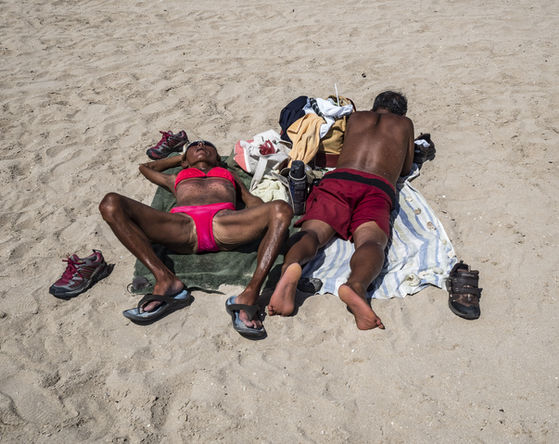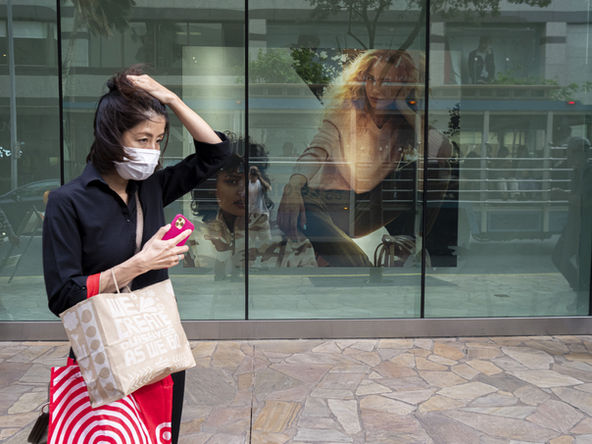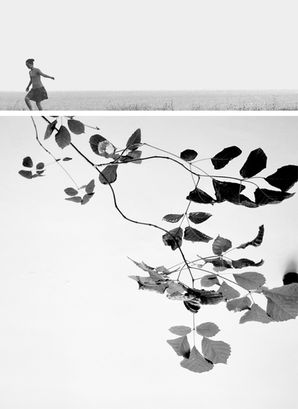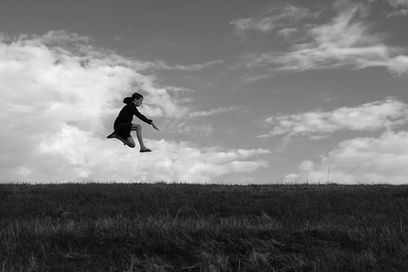
THE RAW AND GRIT OF HAWAII
March 15, 2021
INTERVIEW
PHOTOGRAPHY Tim Huynh
INTERVIEW Melanie Meggs
From the vibrant streets of Hawaii to the gritty cityscapes of New York City, Tim Huynh has become an inspirational figure for street photographers across the globe. His eye-catching images of the streets have captured the attention of many, leading to his directorial debut with the documentary FILL THE FRAME. As an ardent street photographer himself, Tim has worked tirelessly to showcase the raw and honest beauty of city life through his lens.
Inspired by Vivian Maier's captivating photographs, Tim set out on a journey to explore the streets and document the lives of its inhabitants. Having traveled from Hawaii to Chicago and ultimately arriving in New York, Tim has had an incredible journey that has shaped his work and his outlook on life. From short documentaries to feature films, Tim's story shows how determination and passion can lead to great successes.
Today we take a look at the story of Tim Huynh, a passionate street photographer and talented filmmaker, as he shares with us his awe-inspiring journey. Through his words, we will gain insight into both his life and his work on FILL THE FRAME, which follows eight contemporary New York City street photographers as they strive to tell their stories through their art. Join us as we travel with Tim and discover how he found success in photography and film.

“Because I shoot mainly in Honolulu, I wanted to showcase a different side that not many people see. Hawaii isn’t all waves, palm trees, and beach bodies. The real side of Hawaii sometimes isn’t all that pretty. Over the years, times have gotten hard, there’s more homeless on the street and folks just living very modest lifestyles. These are the stories I capture in my photos.”
IN CONVERSATION WITH TIM HUYNH
THE PICTORIAL LIST: Tim please tell us about yourself. How did you become interested in photography and filmmaking?
TIM HUYNH: I’m a first generation Vietnamese, born and raised in Honolulu, Hawaii and currently still residing here. I didn’t grow up surfing waves like most of my friends, or play youth sports. I spent most of my time taking extra math lessons, playing out on the streets in my neighborhood of Kapahulu, and watching professional wrestling. Pro-wrestling such as the WWE (then WWF), was a big part of my childhood, I always loved storytelling, drama, capturing the attention of the audience. This and street photography are probably the two topics I know really well or at least am very passionate about. Interesting enough both are very niche in their industries.
In grade school I was the class clown, I enjoyed making others laugh even if it meant making an ass out of myself. I still do it to this day. I was never the smartest kid or the hardest working kid. And I was nowhere near being naturally talented. However, if I discover something of interest and I set a goal, I go full attack mode. I’m not afraid of failure and I’m not afraid of shame. I embrace those two things as it pushes me to never experience those feelings ever.
I got into filmography as a senior in high school when I took a video making class for my elective. I had plans to go to college at the University of Hawaii but at the time had no idea what to major in. Luckily, UH had just launched their film school and their program got approved by the time I started.
While studying in the Academy of Creative Media at UH, I took a documentary class that really positioned me on this journey. I’ve always loved documentaries. I like being presented with facts and finding out the truth about a subject. But also I hate to follow the herd, so while the majority of my peers gravitated towards fiction cinema, I decided to go rogue. It turned out to be the right direction as I had produced a short documentary on my handicap uncle and it won Best Short Documentary at the school’s year end awards program. After graduation I did a few other short docs but it soon became a burning dream to produce a feature documentary.
In 2010, I was in Chicago interning at a small production studio and one of the fellow interns was telling me about Vivian Maier. He showed me her website and told me the whole back story on how his friend John Maloof bought these negatives from an auction and started scanning them and uploading the images on the internet.
Her images had inspired me, it was so raw and full of life. I thought to myself, if I’m in Chicago where many of these images were produced, I can do that too. I started walking around Rogers Park and Michigan Avenue just snapping away. What resulted was a bunch of out of focus images, mainly of the homeless. Already I had a greater appreciation for Vivian Maier and what she was able to capture. From that week of shooting I had a greater appreciation for her photographs and what she was able to capture. She made it look so simple and easy, but of course it wasn’t.
TPL: How did the idea for the documentary FILL THE FRAME come about? What was the process behind making the movie and finding the photographers?
TH: I was very determined to make a full-length documentary. Usually in documentary film, you need to have some sort of connection with the subject matter. As my interest in street photography continued to grow, I realized this was it! There weren't many other films out there (other than the most notable “Everybody Street”), yet there are so many people around the world that pursue this form of photography.
I let the idea brew for a couple years, just to ensure that I would still feel passionate about it. After a while I decided instead of daydreaming about this documentary, I needed to put my ideas into action. My original idea was to highlight a street photographer in different parts of the world but knew realistically that would not be possible with a limited budget. So I just narrowed it down to New York City. The location has such a rich history and contained a mix of seasoned and new street shooters. I then contacted photographers that I was already following on Instagram and sent them a questionnaire asking them to detail a little more about their own personal back story. Many didn’t respond to my emails, others I did not find too interesting, and few did not want to be involved. Can you blame them? They must have been thinking who’s this kid from Hawaii doing a documentary on New York City street photographers.
I’m very happy with the eight photographers casted in the film. All are excellent photographers with amazing backstories. To me these backstories help bring their photography to life. Taking nice pictures isn't enough, there was more of the story to unveil for these photographers. So I was up for the challenge.
TPL: What were the challenges in making the film? In the end, what did you learn and take away from this experience? Would you do anything different next time?
TH: Of course the biggest challenge was not being a New York native. When I went to film, it was actually my first time visiting the city. There was a lot of research to be done, and filming continued even after I returned home to Hawaii.
Initially, I did not want to shoot too many Q&As with the cast on the streets. I originally thought it would feel more like a YouTube video, but looking back, I would have liked to add more footage of the interview while on the street.
TPL: Where do you find your inspiration?
TH: People in my life inspire me. My mom inspires me. My wife and kids inspire me. Paul Kessel, who in his 80s and motivated to capture his next best shot, inspires me.
TPL: What happens when you go out with your camera? Do people respond positively to you, or do you sometimes get negative reactions? If yes, how do you handle it?
TH: Luckily, I’ve never experienced any serious confrontation. Most of the time I’ll ignore or pretend I don’t speak English. I guess that’s the benefit of living in a tourist trap.
I’m not afraid of failure and I’m not afraid of shame. I embrace those two things as it pushes me to never experience those feelings ever.

TPL: Does the equipment you use help you in achieving your vision in your photography? What camera do you use? Do you have a preferred lens/focal length?
TH: Recently I’ve been using the Ricoh GR III street edition camera. You can watch and subscribe to my light hearted videos on my YouTube channel - www.youtube.com/wordonthestreetphoto
Prior to the GR III, I was using Olympus EM5 Mark ii for six years. It’s a small discreet camera, which makes it easy to take photos on the go. I have lots of memories with that one.
TPL: Do you have any favourite artists or photographers you would like to share with us, and the reason for their significance?
TH: My favorite street photographer is probably Vivian Maier because she was my discovery into street photography. She started me out on this street photography journey.
TPL: Are there any special projects you are currently working on that you would like to let everyone know about? What are some of your goals? Where do you hope to see yourself in five years?
TH: Currently, I’m just trying my best to promote FILL THE FRAME. I feel like there is a larger audience who has not yet seen the film. I also am looking to get back into producing YouTube content. Without a professional publicist, I’m personally reaching out to magazines, bloggers, podcasts and doing my own PR to help get the word out on the film. I think there’s much to enjoy when watching Fill The Frame. It’s not just a film about street photography but rather a film about the hope and dreams of the people in the film and how the past connects to the present and future. This film is not just for avid street photographers or fans but it focuses on a more human element. Anyone who has been bullied, who had a career change, or experiencing the unknowns after retirement can resonate with the film.
In five years, I see myself producing another FILL THE FRAME in another city. I need to get on the hype train while there’s still room.
TPL: When I am not out photographing, I (like to)…
TH: Spend time with my family! That’s what keeps me occupied these days.

Tim Huynh's story is a heart-warming and inspiring tale of how determination and passion can lead to great successes. His journey from Hawaii to New York City has taught him about the raw beauty of the streets and its inhabitants, and his love for photography and film have given us an amazing documentary.




































